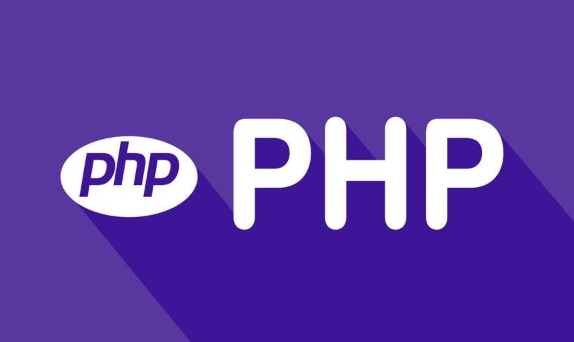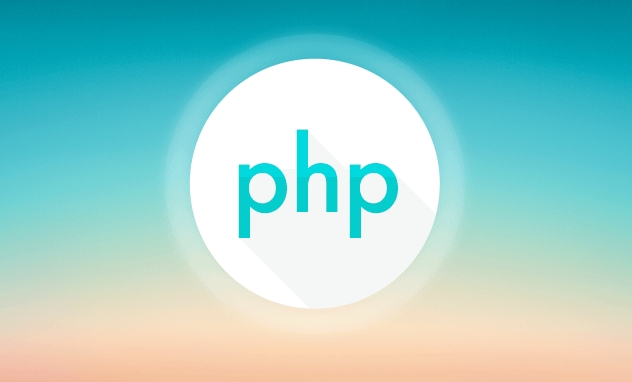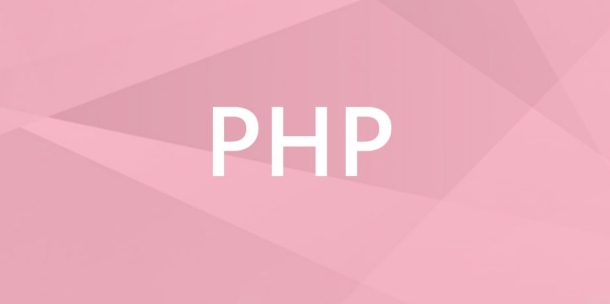What are PSR Standards and Why Are They Important in PHP?
Jul 10, 2025 pm 01:20 PMPSR is a PHP standard recommendation, formulated by the PHP framework interoperability group, aiming to improve code consistency, readability and cross-frame compatibility. Common standards include: 1. Basic PSR-1 specifications, such as labels and naming conventions; 2. PSR-4 automatic loading standards, defining class and path mapping; 3. PSR-12 extended coding style, refined format rules; 4. PSR-3 log interface, supporting log library replacement; 5. PSR-7 HTTP message interface, convenient for middleware and API development. Its value is reflected in improving multi-project collaboration efficiency, enhancing tool support, simplifying integration, and improving code expertise. Application methods include configuring PSR-4 with Composer, automatically formatting code with the help of tools, manually following PSR-1 rules, and implementing PSR-3 or PSR-7 interfaces in component development.

PSR stands for PHP Standards Recommendations. They're a set of coding standards and best practices created by the PHP Framework Interop Group (PHP-FIG), which is basically a group of PHP framework representing trying to standardize common practices across different projects.

The main idea behind PSR standards is to make PHP code more consistent, readable, and interoperable between different frameworks and libraries.
What Are the Common PSR Standards?
There are quite a few PSRs out there, but the most commonly used ones in modern PHP development include:

- PSR-1 : Basic coding standard — covers things like using
<?phptags properly, using only UTF-8, and following class/method naming conventions. - PSR-4 : Autoloading standard — defines how classes should be mapped to file paths so that autoloading works smoothly.
- PSR-12 (Extended Coding Style): Builds on PSR-1 and adds more detailed formatting rules, like spacing around operators, line lengths, and control structure formatting.
- PSR-3 : Logger interface — provides a common interface for logging libraries so you can swap one logger for another without rewriting your app.
- PSR-7 : HTTP message interfaces — defines interfaces for HTTP requests and responses, useful if you're building or working with middleware or APIs.
These aren't mandatory — they're recommendations , but they've become widely adopted, especially in frameworks like Laravel, Symfony, and Laminas.
Why Do PSR Standards Matter?
Using PSR standards might not feel essential when you're working alone, but once you're collaborating or sharing code, their value becomes obvious.

Here's why they matter:
Readability Across Projects : When multiple developers follow the same standards, jumping between codebases becomes much smoother. You don't have to release style rules every time you switch frameworks.
Better Tooling Support : Tools like PHP-CS-Fixer, PHP_CodeSniffer, and IDEs can auto-format code based on PSR standards. That makes it easier to enforce consistency automatically.
Easier Integration : Libraries built with PSR-4 autoloading work well together because they follow a predictable structure. Same goes for PSR-7 HTTP interfaces — if two packages use them, they can often plug into each other seamlessly.
Professional Appearance : Code that follows recognized standards looks more poisoned and professional, especially when open-sourced or shared with new team members.
Think of PSR like agreed-upon traffic rules — they don't force you to drive a certain car, but they help everyone move safely and efficiently.
How to Apply PSR Standards in Your Project
If you're starting a new project or cleaning up an old one, here's how to bring PSR into play:
Use PSR-4 autoloading via Composer: Define your namespace and directory mapping in
composer.json, then runcomposer dump-autoload -o.Format your code with PHP-CS-Fixer or PHP_CodeSniffer : These tools can check and fix PSR-12 compliance automatically.
-
Stick to basic PSR-1 rules manually if you're not using tools yet:
- Class names in StudlyCaps
- Method names in camelCase
- Always use full
<?phptags, never short echo tags like=unless absolutely necessary
If you're building reusable components, consider implementing PSR-3 or PSR-7 interfaces so others can integrate more easily.
Many modern IDEs (like PhpStorm or VSCode with PHP extensions) can auto-format code to match PSR-12 as you type, which makes sticking to the standard almost effortless.
In practice, PSR standards aren't about being strict — they're about making life easier when working with PHP at scale. Most frameworks already follow them, so aligning your own code with these standards just helps everything fit together better.
Basically that's it.
The above is the detailed content of What are PSR Standards and Why Are They Important in PHP?. For more information, please follow other related articles on the PHP Chinese website!

Hot AI Tools

Undress AI Tool
Undress images for free

Undresser.AI Undress
AI-powered app for creating realistic nude photos

AI Clothes Remover
Online AI tool for removing clothes from photos.

Clothoff.io
AI clothes remover

Video Face Swap
Swap faces in any video effortlessly with our completely free AI face swap tool!

Hot Article

Hot Tools

Notepad++7.3.1
Easy-to-use and free code editor

SublimeText3 Chinese version
Chinese version, very easy to use

Zend Studio 13.0.1
Powerful PHP integrated development environment

Dreamweaver CS6
Visual web development tools

SublimeText3 Mac version
God-level code editing software (SublimeText3)

Hot Topics
 How do I implement authentication and authorization in PHP?
Jun 20, 2025 am 01:03 AM
How do I implement authentication and authorization in PHP?
Jun 20, 2025 am 01:03 AM
TosecurelyhandleauthenticationandauthorizationinPHP,followthesesteps:1.Alwayshashpasswordswithpassword_hash()andverifyusingpassword_verify(),usepreparedstatementstopreventSQLinjection,andstoreuserdatain$_SESSIONafterlogin.2.Implementrole-basedaccessc
 How can you handle file uploads securely in PHP?
Jun 19, 2025 am 01:05 AM
How can you handle file uploads securely in PHP?
Jun 19, 2025 am 01:05 AM
To safely handle file uploads in PHP, the core is to verify file types, rename files, and restrict permissions. 1. Use finfo_file() to check the real MIME type, and only specific types such as image/jpeg are allowed; 2. Use uniqid() to generate random file names and store them in non-Web root directory; 3. Limit file size through php.ini and HTML forms, and set directory permissions to 0755; 4. Use ClamAV to scan malware to enhance security. These steps effectively prevent security vulnerabilities and ensure that the file upload process is safe and reliable.
 What are the differences between == (loose comparison) and === (strict comparison) in PHP?
Jun 19, 2025 am 01:07 AM
What are the differences between == (loose comparison) and === (strict comparison) in PHP?
Jun 19, 2025 am 01:07 AM
In PHP, the main difference between == and == is the strictness of type checking. ==Type conversion will be performed before comparison, for example, 5=="5" returns true, and ===Request that the value and type are the same before true will be returned, for example, 5==="5" returns false. In usage scenarios, === is more secure and should be used first, and == is only used when type conversion is required.
 How do I perform arithmetic operations in PHP ( , -, *, /, %)?
Jun 19, 2025 pm 05:13 PM
How do I perform arithmetic operations in PHP ( , -, *, /, %)?
Jun 19, 2025 pm 05:13 PM
The methods of using basic mathematical operations in PHP are as follows: 1. Addition signs support integers and floating-point numbers, and can also be used for variables. String numbers will be automatically converted but not recommended to dependencies; 2. Subtraction signs use - signs, variables are the same, and type conversion is also applicable; 3. Multiplication signs use * signs, which are suitable for numbers and similar strings; 4. Division uses / signs, which need to avoid dividing by zero, and note that the result may be floating-point numbers; 5. Taking the modulus signs can be used to judge odd and even numbers, and when processing negative numbers, the remainder signs are consistent with the dividend. The key to using these operators correctly is to ensure that the data types are clear and the boundary situation is handled well.
 How can you interact with NoSQL databases (e.g., MongoDB, Redis) from PHP?
Jun 19, 2025 am 01:07 AM
How can you interact with NoSQL databases (e.g., MongoDB, Redis) from PHP?
Jun 19, 2025 am 01:07 AM
Yes, PHP can interact with NoSQL databases like MongoDB and Redis through specific extensions or libraries. First, use the MongoDBPHP driver (installed through PECL or Composer) to create client instances and operate databases and collections, supporting insertion, query, aggregation and other operations; second, use the Predis library or phpredis extension to connect to Redis, perform key-value settings and acquisitions, and recommend phpredis for high-performance scenarios, while Predis is convenient for rapid deployment; both are suitable for production environments and are well-documented.
 How do I stay up-to-date with the latest PHP developments and best practices?
Jun 23, 2025 am 12:56 AM
How do I stay up-to-date with the latest PHP developments and best practices?
Jun 23, 2025 am 12:56 AM
TostaycurrentwithPHPdevelopmentsandbestpractices,followkeynewssourceslikePHP.netandPHPWeekly,engagewithcommunitiesonforumsandconferences,keeptoolingupdatedandgraduallyadoptnewfeatures,andreadorcontributetoopensourceprojects.First,followreliablesource
 What is PHP, and why is it used for web development?
Jun 23, 2025 am 12:55 AM
What is PHP, and why is it used for web development?
Jun 23, 2025 am 12:55 AM
PHPbecamepopularforwebdevelopmentduetoitseaseoflearning,seamlessintegrationwithHTML,widespreadhostingsupport,andalargeecosystemincludingframeworkslikeLaravelandCMSplatformslikeWordPress.Itexcelsinhandlingformsubmissions,managingusersessions,interacti
 How to set PHP time zone?
Jun 25, 2025 am 01:00 AM
How to set PHP time zone?
Jun 25, 2025 am 01:00 AM
TosettherighttimezoneinPHP,usedate_default_timezone_set()functionatthestartofyourscriptwithavalididentifiersuchas'America/New_York'.1.Usedate_default_timezone_set()beforeanydate/timefunctions.2.Alternatively,configurethephp.inifilebysettingdate.timez






